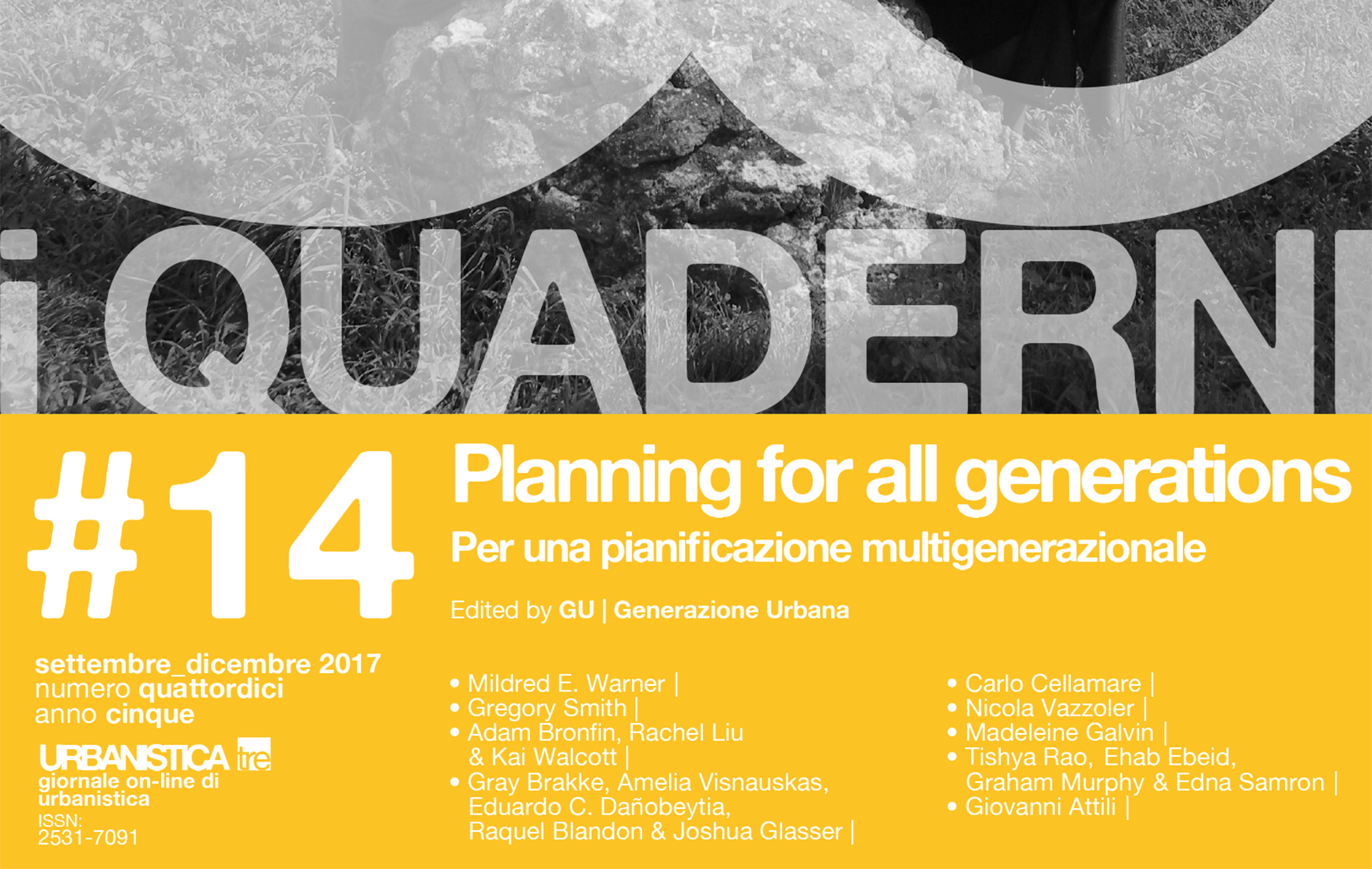
scarica il numero
1^parte (indice, editoriale, contributi)
2^parte (contributi, apparati)
scarica l’indice
settembre-dicembre 2017
a cura di
GU | Generazione Urbana
Nota Etica | Publication ethics
Processo di peer-review | Peer-review process
Revisori QU3 | QU3 Reviewers
Our societies are ageing. European countries, more than others, are experiencing a strong greying of their populations, not compensated by a growth of births. Eurostat projections estimate that the share of EU citizens aged over 65 will increase from 18% in 2013 to 28% in 2060. Italy in particular is the oldest European country with 20,3% of the population more than 65. On the other hand, the youngest part of the society (under 14) represents only the 14% of the Italian population. Although European countries are on average approximately five years ahead of the U.S. aging curve, in the U.S. as well, nearly 20 percent of the population will be over age 65 by 2030. Demographic projections confirm these dynamics in the next future, posing important questions to the sustainability of the current social asset.
These transformations will deeply impact not only on the social realm but also on the places where most of the population live: cities. Cities are still designed and planned for a specific human target type: a working age man in his full mental and physical abilities, who needs a place to live, easily accessible by car and equipped with the services required for a comfortable life. Poor attention is devoted to walkable accessibility of local services and to the quality and comfort of the pedestrian experience. These, together with many other aspects neglected in design and planning practice, have a core role in enhancing the quality of life of the weakest segments of population, such as children and elders.
The shifting demographics, together with the implied changing needs, calls for a new approach to rethink the way cities are planned and for whom. Older adults, children and young people share concerns about accessibility to safe public spaces and accessibility to public transport, they report high levels of fear of crime, but are also concerned with the provision of public space to socialize and develop cross community and intergenerational linkages. Families with young children bring issues related to service provision, local economics and long-term growth, too.
The current debate about multigenerational city planning tends to reduce the raised issues to the question of accessibility or openness of the physical space. But accessible cities are not only about infrastructure and services. It is becoming more and more evident how an enabling social environment, capable of giving voice and visibility for citizens, regardless of age, is as important as material conditions in determining well-being in life. It is then clear that the issue of planning cities for multiple ages requires an integrated approach that includes different policies like economic, social, environmental and spatial and that promotes participation with multiple stakeholders and expertise.
GU | V. Andriola & S. Muccitelli






